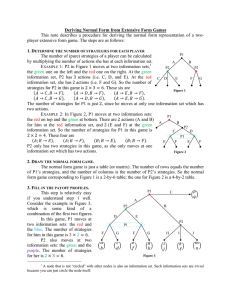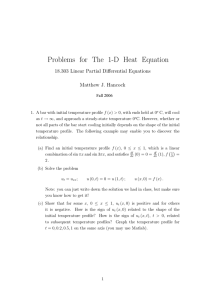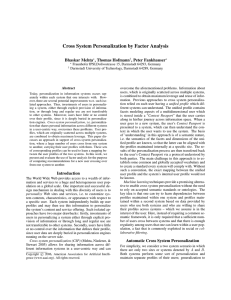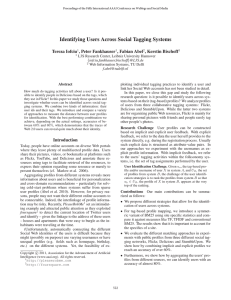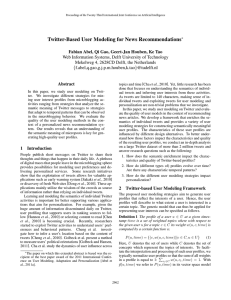Question 1
advertisement
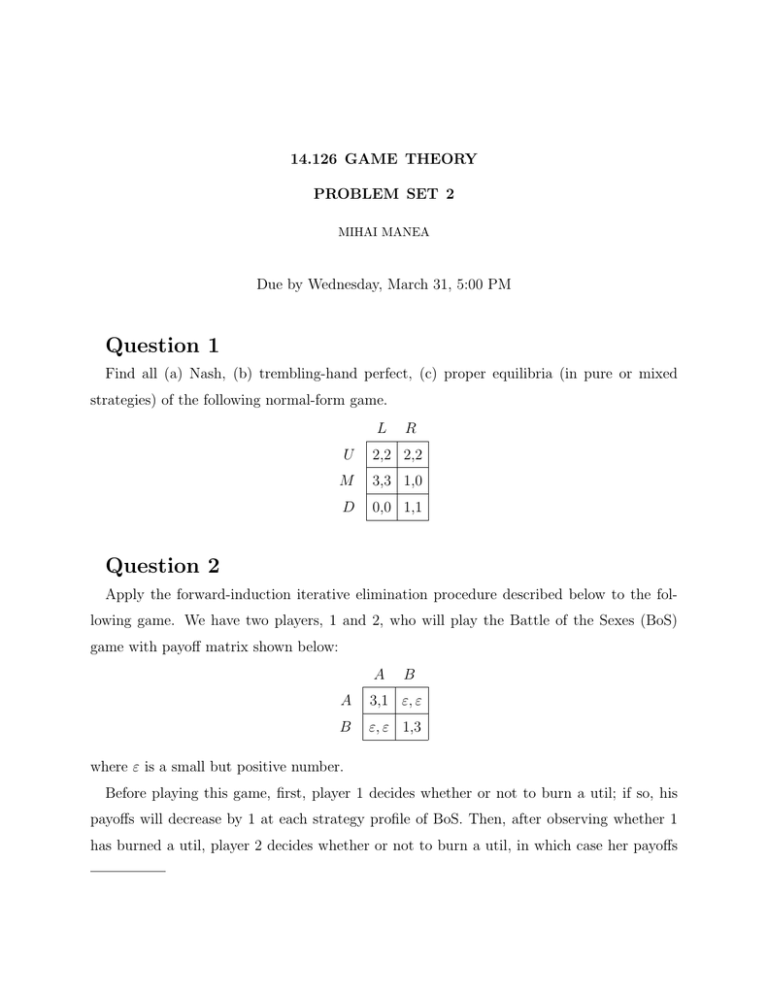
14.126 GAME THEORY PROBLEM SET 2 MIHAI MANEA Due by Wednesday, March 31, 5:00 PM Question 1 Find all (a) Nash, (b) trembling-hand perfect, (c) proper equilibria (in pure or mixed strategies) of the following normal-form game. L R U 2,2 2,2 M 3,3 1,0 D 0,0 1,1 Question 2 Apply the forward-induction iterative elimination procedure described below to the fol­ lowing game. We have two players, 1 and 2, who will play the Battle of the Sexes (BoS) game with payoff matrix shown below: A B A 3,1 ε, ε B ε, ε 1,3 where ε is a small but positive number. Before playing this game, first, player 1 decides whether or not to burn a util; if so, his payoffs will decrease by 1 at each strategy profile of BoS. Then, after observing whether 1 has burned a util, player 2 decides whether or not to burn a util, in which case her payoffs 2 MIHAI MANEA will decrease by 1 at each strategy profile of BoS. Then, after both players have observed each other’s decisions to burn or not, they play BoS. The iterative procedure is as follows. Let Si be player i’s pure strategy space. A belief system µi for player i specifies, for each information set h of player i, a probability distribution µi (h) over S−i . • Let Si0 = Si . • At any step t, for each player i, let Δti be the set of all belief systems µi with the following property: for any information set h of i that can be reached by some strategy profile in t t , if µi (s−i |h) > 0, then s−i ∈ S−i and h is reached by (si , s−i ) for some Si × S−i si ∈ Si . For each player i, and each pure strategy si ∈ Sit , eliminate si if there does not exist any µi ∈ Δti such that si is sequentially rational with respect to µi . Let Sit+1 be the set of remaining strategies. • Iterate this until the elimination stops. (If you have done this correctly, you should find in the end that the procedure predicts the outcome that is best for player 2.) Question 3 (a) Consider the repeated game RG(δ), where the stage game is matching pennies: H T H 1,-1 -1,1 T -1,1 1,-1 For any discount factor δ ∈ (0, 1), find all the subgame-perfect equilibria of the repeated game. (b) A game G = (N, A, u) is said to be a zero-sum game if � i∈N ui (a) = � i∈N ui (a� ) for all a, a� ∈ A. For any discount factor δ ∈ (0, 1) and any two-player zero-sum game, compute the set of all payoff vectors that can occur in an SPE of the repeated game RG(δ). PROBLEM SET 2 3 Question 4 Consider the three-player coordination game shown below. A B A B A 1,1,1 0,0,0 A 0,0,0 0,0,0 B 0,0,0 0,0,0 B 0,0,0 1,1,1 A B Show that each player’s minmax payoff is 0, but that there is ε > 0 such that in every SPE of the repeated game RG(δ), regardless of the discount factor δ, every player’s payoff is at least ε. Why does this example not violate the Fudenberg-Maskin folk theorem? Question 5 Consider a repeated game with imperfect public monitoring. Assume that the action space and signal space are finite. Let E(δ) be the set of expected payoff vectors that can be achieved in perfect public equilibrium, where public randomization is available each period. Show that if δ < δ � , then E(δ) ⊆ E(δ � ). Question 6 (a) Let G = (N, A, u) be a finite normal-form game. Consider the repeated game RG(δ) for some δ ∈ (0, 1). Mixed actions are not observed; only their realizations are. The set of (behavioral) strategy profiles is endowed with the product topology: a sequence of strategy profiles (σ k ) converges to σ if and only if σik (h) → σi (h) for every player i and history h. Show that with this topology, the set of all (mixed) SPE profiles is closed. (b) Let G = (N, A, u) be a normal-form game, where Ai = [0, 1] and the payoff function ui is continuous on A, for each player i. The set of pure-strategy profiles is endowed with the product topology as above. Show by example that the set of pure-strategy SPE profiles is not necessarily closed. MIT OpenCourseWare http://ocw.mit.edu 14.126 Game Theory Spring 2010 For information about citing these materials or our Terms of Use, visit: http://ocw.mit.edu/terms.


